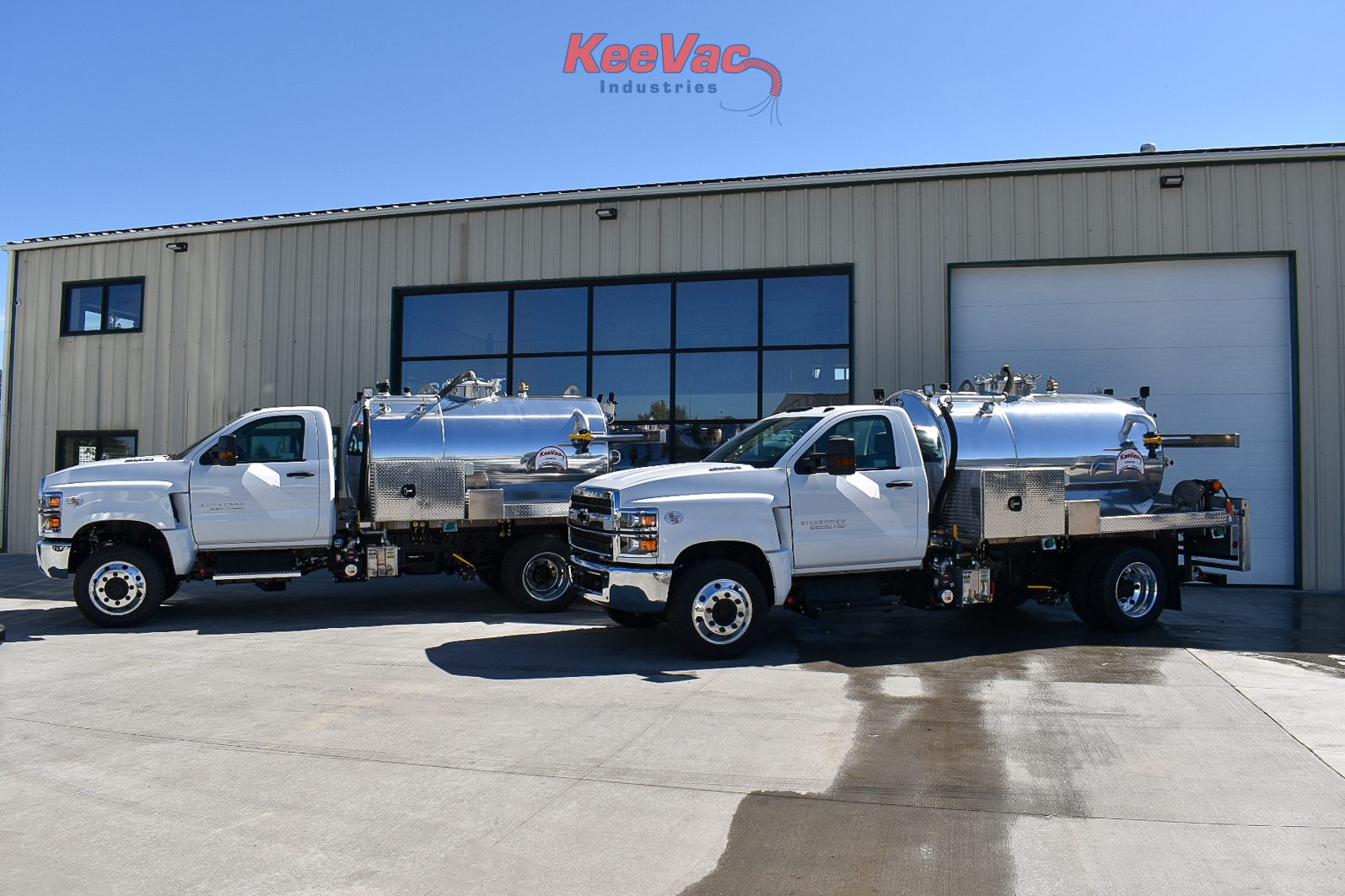Choosing Between Aluminum and Steel Tanks for Your Vacuum Truck

When outfitting a vacuum truck, the choice of tank material is a critical decision that impacts weight, durability, cost, and long-term value. Aluminum and steel are the two most commonly used materials, each with unique advantages and disadvantages. Understanding how these materials differ can help you make an informed decision for your business.
Weight and Payload Considerations
Aluminum’s Lightweight Advantage
Aluminum vacuum tanks are significantly lighter than their steel counterparts. For operators prioritizing maximum payload capacity, this weight reduction can be a game-changer. The lighter tank allows for more waste-hauling capability, translating directly into fewer trips, greater efficiency, and improved operational performance.
For example, a typical aluminum tank can weigh 30-50% less than a comparable steel tank. This reduction is particularly advantageous for operators in industries like septic services or hazardous material transport, where maximizing payload is essential.
Impact on Fuel Efficiency and Hauling Capacity
Weight affects more than just payload; it also influences fuel efficiency. Lighter aluminum tanks reduce overall vehicle weight, meaning your vacuum truck consumes less fuel during operation. This can lead to significant cost savings over time, especially for businesses with large fleets or vehicles operating over long distances.
Additionally, with less strain on the truck’s engine and suspension system, aluminum tanks may extend the overall lifespan of your vacuum truck. Operators looking to reduce both operational costs and wear and tear should consider the benefits of lightweight aluminum.
Durability and Longevity Factors
Corrosion Resistance Comparison
One of aluminum’s standout features is its excellent resistance to corrosion. Aluminum tanks are less prone to rust, making them ideal for environments where exposure to moisture, chemicals, or waste materials is common. This natural corrosion resistance minimizes the need for protective coatings and ensures a longer lifespan for the tank.
Steel, while stronger in some respects, is more susceptible to rust and corrosion, particularly when not adequately treated or maintained. However, stainless steel, a corrosion-resistant variant, provides an alternative for operators who need steel’s strength but want to minimize rusting concerns.
Structural Integrity in Various Operating Conditions
Steel excels in structural integrity, offering higher tensile strength and the ability to withstand extreme pressures. For applications requiring robust construction, such as transporting heavy sludge or operating in rugged terrains, steel tanks are often the better choice.
On the other hand, aluminum tanks are more prone to dents or damage under high-pressure conditions or during rough handling. For operators in demanding industries like oil and gas, where tanks endure significant physical stress, steel may provide the durability needed to handle such workloads.
Cost Analysis: Initial Investment vs. Long-Term Value
Purchase Price Differences
When comparing aluminum vs. steel vacuum tanks, the initial purchase price is often a deciding factor. Aluminum tanks typically cost more upfront due to the higher cost of raw materials and manufacturing processes. For small businesses or operators with tight budgets, steel tanks may present a more affordable initial investment.
However, it’s crucial to evaluate these costs in the context of long-term value. Aluminum’s lightweight design can offset its higher initial cost through improved fuel efficiency and reduced maintenance requirements.
Maintenance and Replacement Costs Over Time
Steel tanks require more frequent maintenance to prevent rust and corrosion, which can increase operational costs over time. Protective coatings and routine inspections are essential to maintaining a steel tank’s integrity, especially in harsh environments.
In contrast, aluminum tanks are relatively low maintenance, thanks to their corrosion resistance. They may require occasional polishing to maintain their appearance, but the overall upkeep costs are generally lower than those of steel tanks. Additionally, the reduced likelihood of rust damage means aluminum tanks often last longer, providing better long-term value.
Which Tank Is Right for Your Business?
Choosing between aluminum and steel vacuum tanks depends on your specific needs, industry requirements, and operational priorities.
- Choose Aluminum if your business prioritizes lightweight tanks, improved fuel efficiency, and lower long-term maintenance costs. Aluminum tanks are ideal for industries where corrosion resistance is critical, such as septic services or chemical transport.
- Choose Steel if your operations demand maximum durability, structural strength, and cost-effective initial investments. Steel tanks are well-suited for heavy-duty applications in industries like oil and gas or construction.
Why KeeVac Industries Is Your Trusted Vacuum Truck Partner
At KeeVac Industries, we understand that every business has unique needs. That’s why we offer a wide range of vacuum tanks, including high-quality aluminum and steel options. Whether you need a new or used chassis from top brands like Ford, Chevrolet, Ram, or Peterbilt or are looking for our innovative aluminum slide-in pumper units that fit almost any full-size pickup, we’ve got you covered.
Our Denver-based team specializes in creating customized solutions tailored to your industry requirements. Contact us today to learn more about our septic pump trucks, vacuum tanks, and slide-in units. Let us help you make the best choice for your vacuum truck equipment!